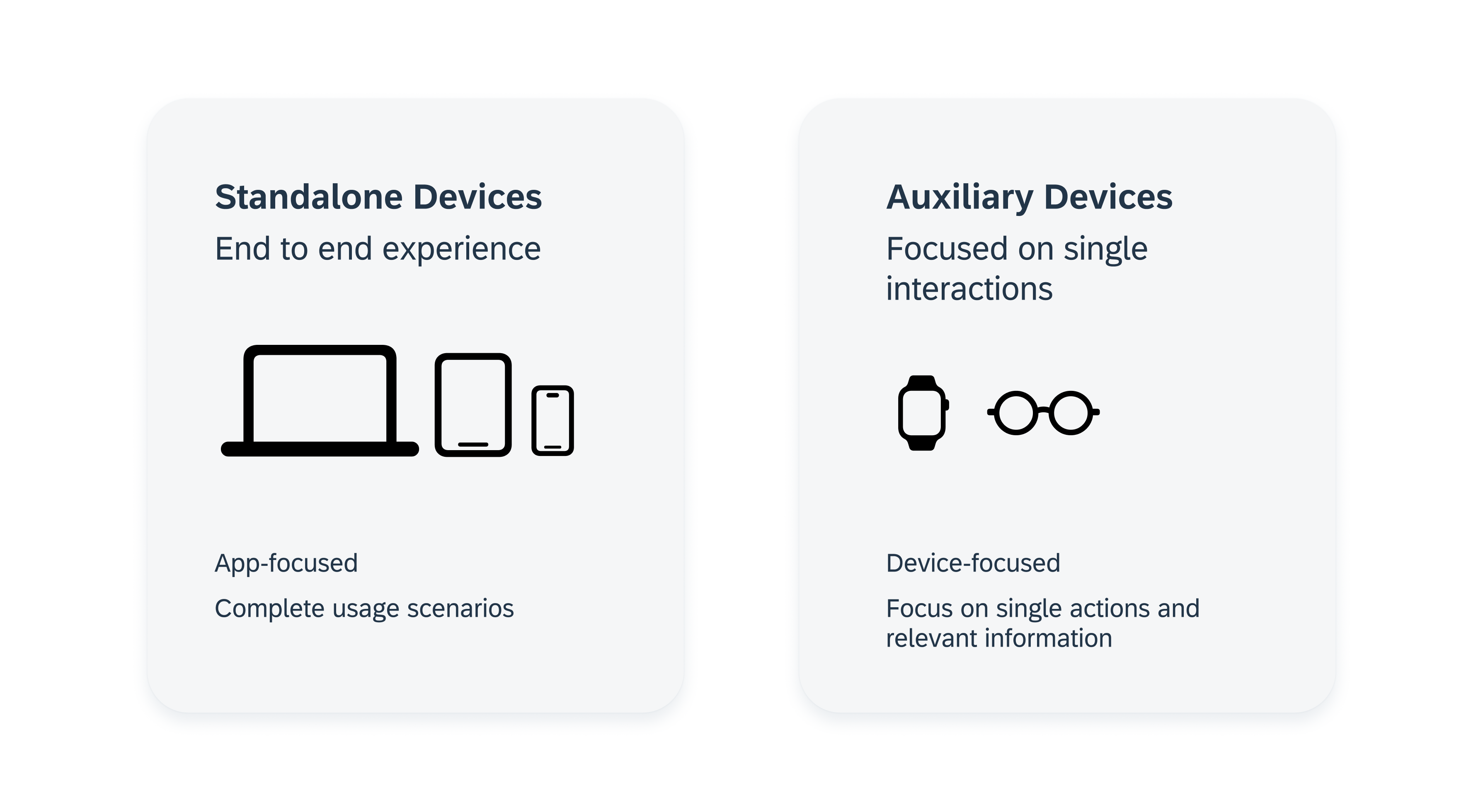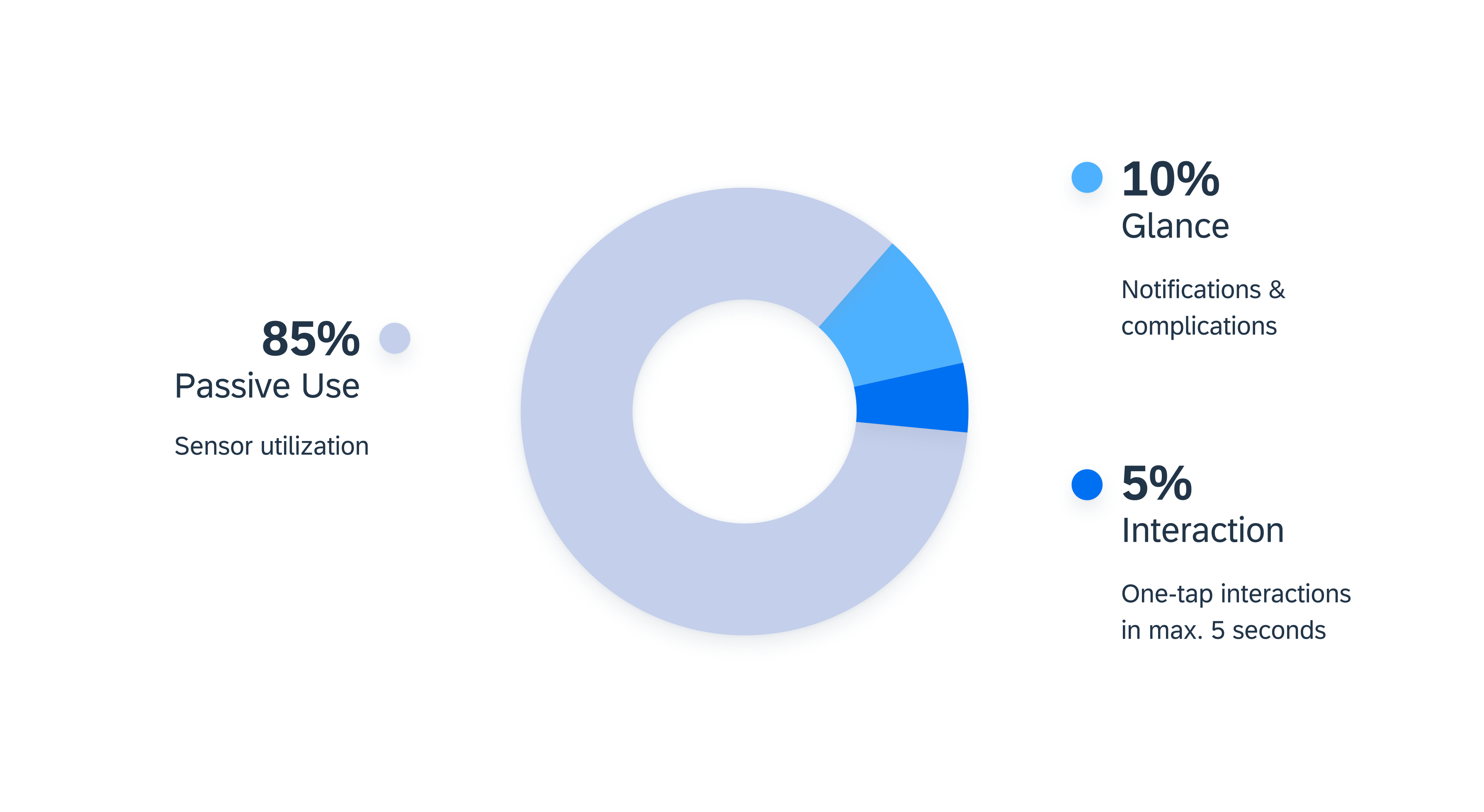Design Principles
Intro
SAP Fiori for watchOS provides a consistent and holistic user experience for SAP software on wearables. Wearables are computer technologies that users wear on their bodies, creating a more personalized experience. Common types of wearable devices are watches.
The purpose of wearables is to support an activity in the real world by providing additional information, for example, evaluations based on sensors tracking the body’s vitals, or glanceable instructions without touching the device.
Designing for watch apps presents a fundamentally different approach from designing for mobile apps. Not only is the screen that users interact with much smaller, but also the way and duration users interact with the watch app is different compared to mobile apps. Therefore, the most important aspect of creating a watch app is to define focused wearable requirements instead of trying to mirror the scope of the mobile app. In addition, the user experience on a watch cannot be compared to the experience of a mobile device and therefore follows different design principles.

Mobile devices as standalone devices with app focus and wearables as optional devices with device focus
In contrast to a watch app, apps on a mobile device represent an end-to-end experience. That means, while the mobile device contains the complete app, the watch version focuses more on informing the user selectively, with, for example, relevant notifications or complications, and a maximum of one or two functions that can be performed quickly.
Passive use and brief glance interactions with the end device predominate on the watch:

Watch usage categories
In general, the usage of watches is divided into the following categories:
- 85 % passive use, such as usage of the sensor
- 10 % looking at the watch, such as notifications, complications
- 5 % performing actions, such as setting timers
The image above shows that the way users interact with watch apps differs greatly from mobile apps – especially in terms of passive usage. As a result, the design process for watch apps must start with specifying the requirements. If guidelines for wearables are not considered, not only will the added value of a watch app quickly decrease, but also the general user experience of the app will be negatively affected. This may cause users to discontinue using the watch app because they do not depend on it.
- Focus on single actions and relevant information.
- Try to use one-tap interactions.
- Minimize hierarchies within the app.
- Leverage a “favourites” or “recents” feature as well as usage patterns to infer user-based relevance of content.
- Don’t translate mobile app capabilities to the watch.
- Don’t apply mobile app information architecture to the watch.
- Don’t assume that the mental model for the mobile app is the same as for the watch app.
Keep in mind that there are also platform-specific differences when it comes to watch apps. The following table shows a rough overview of the most important differences of the operating systems watchOS from Apple and Wear OS from Google that influence the design of a watch app.
| Feature | watchOS (Apple) |
Wear OS (Google) |
|---|---|---|
| Tiles Component | Instead of tiles, watchOS supports dock cards that have similar properties as tiles. | Tiles offer users glanceable actions and information. Users can configure which tiles they want to be displayed so that they can access them by swiping from the watch face. |
| Back Navigation/Cancel | Back button in title area or hardware button. | Swipe right or hardware button. |
| Text Layout | Mostly left-aligned. | Mostly centered. |
| Icon Buttons | Rather uncommon. | Very common. |
| Text Resizing | Cannot be deactivated. Components need to be optimized for that feature. | Can be deactivated. |
| Display Form Factors | Square display only. | Round, square and rectangular displays. |
| Handover Feature | Not supported by default. | Default feature. |
